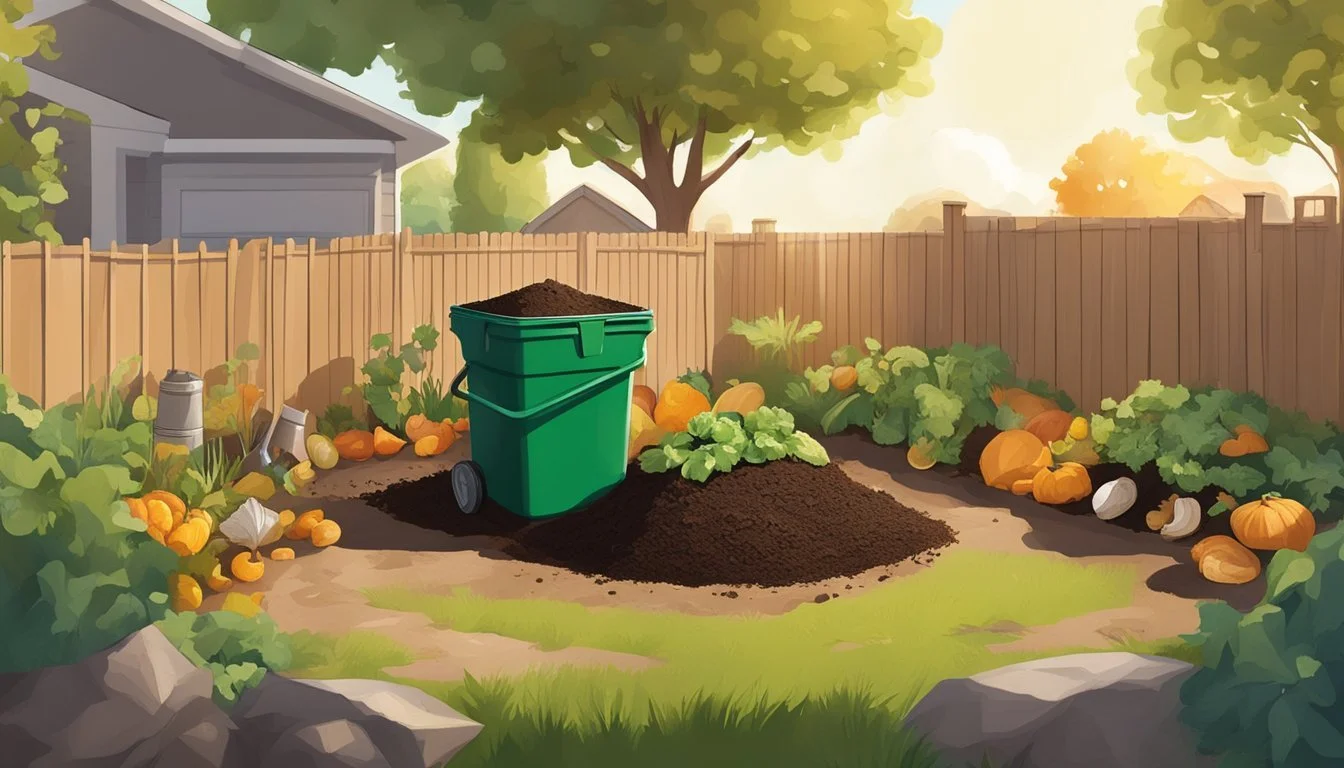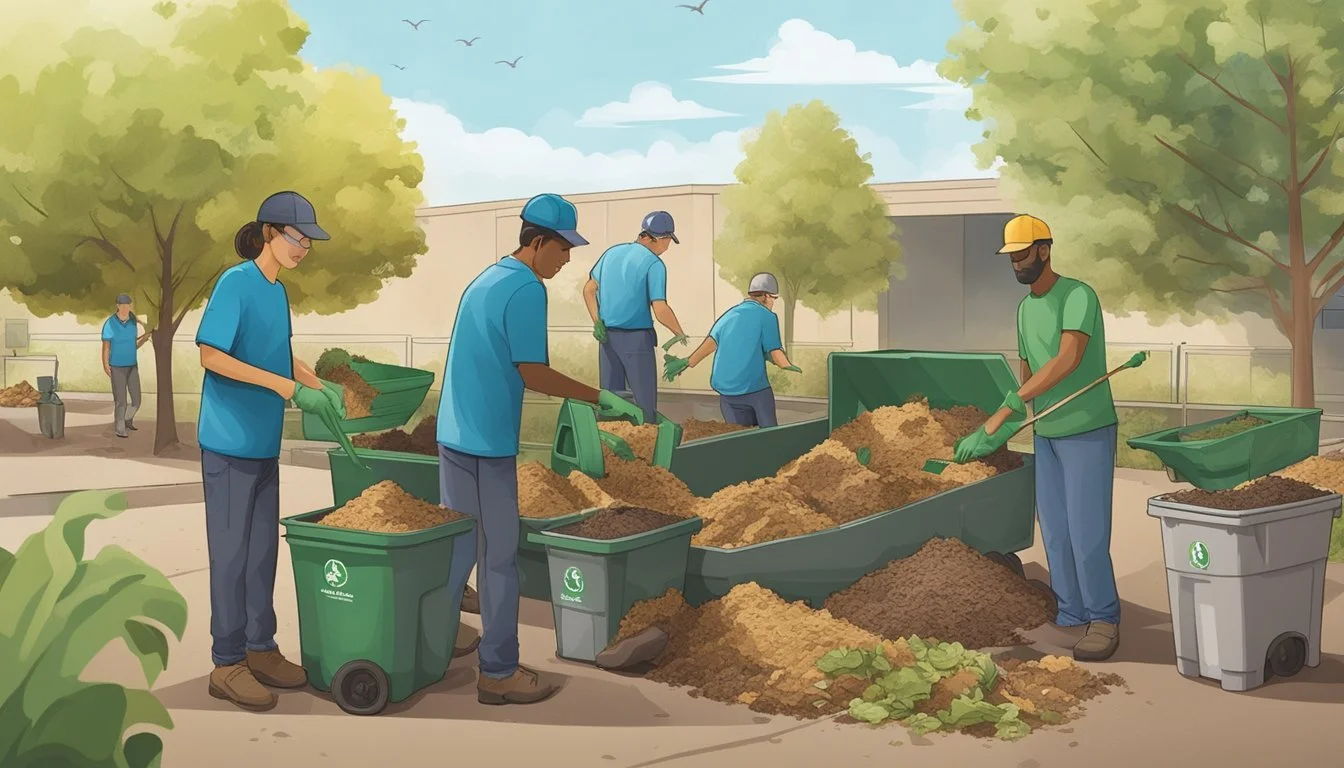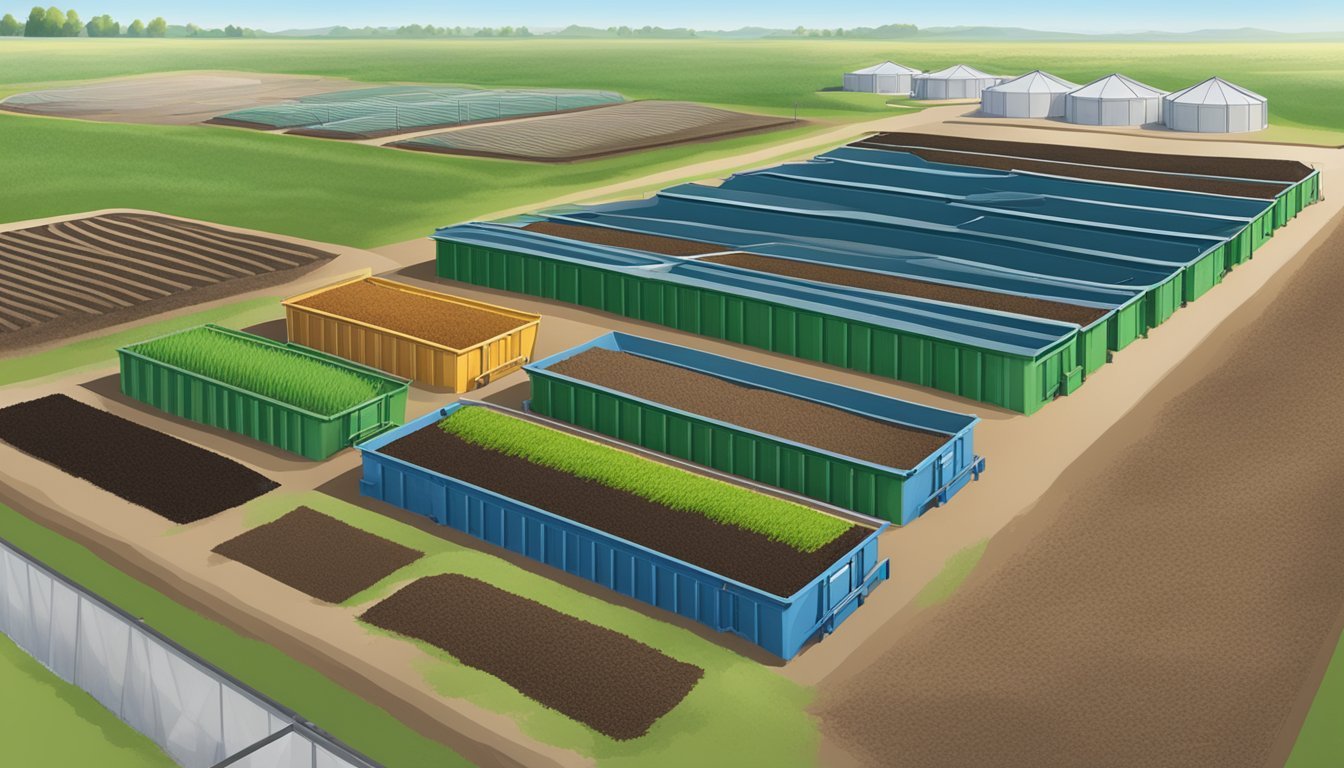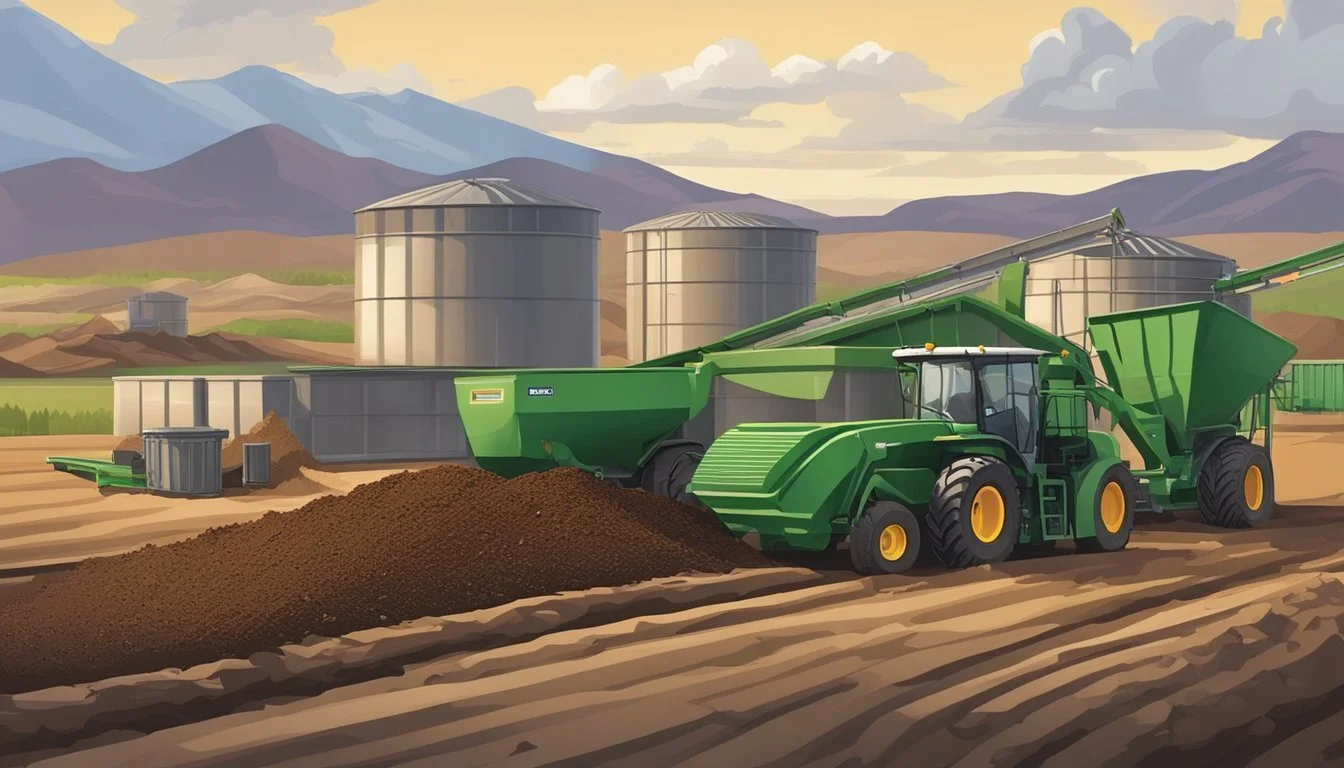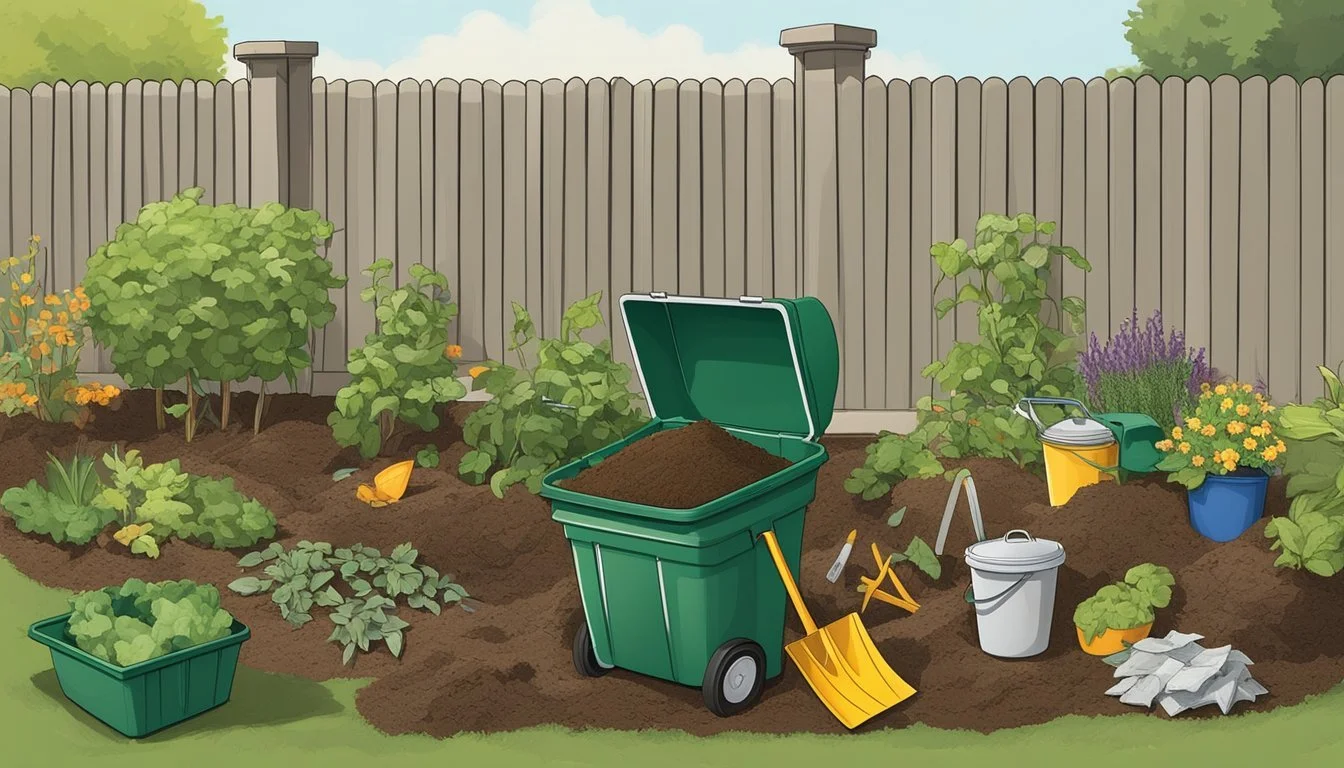Guide to Composting in Nampa, ID
Essential Tips for Local Success
Nampa, Idaho, is embracing the environmentally-friendly practice of composting, a pivotal step in recycling organic waste and contributing to a greener community. Composting is the process of converting organic materials like leaves, kitchen scraps, and garden waste into a nutrient-rich soil conditioner through natural decomposition. It not only enriches the soil, supporting plant growth and restoring vitality to depleted land, but it also helps to reduce methane emissions from landfills and lower the city's carbon footprint.
In Nampa, residents have recognized the benefits of turning everyday waste into valuable compost. By engaging in composting, they are not just disposing of waste; they are participating in an ongoing cycle of renewal that promotes sustainability. Whether gardeners are looking to nourish their backyard gardens or landscapers are in need of high-quality topsoil, composting in Nampa provides an excellent solution.
The city's commitment to composting is reflected in the availability of resources and services designed to make it easy and efficient for individuals to contribute to the cause. From local composting facilities that process large volumes of organic material to educational resources that help beginners get started, Nampa is fostering a community where recycling isn't just a habit; it's a way of life that supports both the local environment and the global ecosystem.
Understanding Composting
Composting is an essential process for converting organic waste into a nutrient-rich soil amendment, benefiting both gardens and the environment.
The Basics of Composting
Composting is the biological decomposition of organic material under controlled, aerobic conditions. Microorganisms break down plant and food scraps, transforming them into compost, which is rich in nutrients and beneficial for the earth. The key components necessary for successful composting include:
Organic matter: such as leaves, kitchen scraps, and grass clippings.
Moisture: to support the survival of microorganisms.
Oxygen: for aerobic decomposition, often maintained by turning the pile.
Temperature: to optimize the conditions for microbial activity.
Benefits of Composting
Composting offers a range of environmental benefits. By converting waste into useful compost, it reduces the volume of garbage sent to landfills and decreases methane emissions. The resulting compost is a nutrient-rich product that improves soil structure, enriches the soil, and helps retain moisture. Moreover, it supports plant growth by providing a natural source of nutrients, reducing the need for chemical fertilizers.
Composting Methods
There are several methods of composting, each suitable for different types of waste and settings:
Backyard Composting: One can start with a simple pile to harness the composting process, ensuring a mix of greens and browns for balance.
Trenching or Pit Composting: Burying waste directly into the ground where it decomposes over time.
In-Vessel Composting: This involves feeding organic materials into a drum, silo, or similar equipment, capable of handling all types of organic waste, including meat and dairy products. It is an effective method for large-scale compost efforts, which can be found with guidance from the U.S. EPA.
Vermicomposting: The use of worms to decompose organic food waste, turning it into vermicast, a high-quality compost.
In summary, by understanding the basics, benefits, and methods of composting, individuals and communities in Nampa, ID, can play a significant role in waste reduction and soil enhancement.
Getting Started with Composting
Composting in Nampa, ID offers an environmentally sound way of recycling organic waste into a rich soil amendment for gardening. A successful compost setup begins with careful planning and the right equipment.
Selecting a Composting Site
One must choose a location that is convenient for adding materials and retrieving compost, as mentioned by Adams Gardens. It should be a well-drained area with good access to water. The site should also be away from direct contact with neighbors to prevent any potential odor issues. A minimum size of 3 feet in diameter provides enough mass to retain heat yet remains manageable for turning and maintenance.
Composting Equipment and Tools
For a basic composting setup, a compost bin functions as a containment unit, keeping the pile neat and making it easier to manage. Bins can be constructed or purchased, depending on personal preference. The use of a shovel is critical for turning and mixing compost materials, ensuring proper aeration that facilitates the decomposition process. A compost thermometer is an excellent tool for monitoring the pile's temperature, helping one maintain the optimal conditions to encourage microbial activity, which The Old Farmer’s Almanac suggests should be warm like a damp sponge.
Building Your Compost Pile
Creating a successful compost pile in Nampa, ID, involves selecting appropriate materials and employing effective layering techniques to encourage decomposition.
Materials to Compost
In Nampa, gardeners can enrich their soil by composting a mix of brown materials such as wood chips and dry leaves, and green materials like fresh grass clippings and kitchen scraps. Browns provide carbon, while greens supply nitrogen, essential for the composting process.
Green Materials:
Fresh grass clippings: These should be free of pesticides to avoid harming beneficial composting organisms.
Kitchen scraps: Vegetable peels, fruit waste, and coffee grounds can be included but avoid meats and dairy.
Brown Materials:
Leaves and straw: These should be shredded to speed up decomposition.
Wood chips: Use sparingly as they break down slower than other materials.
Layering Techniques
Proper layering helps maintain a balanced compost pile, which will decompose efficiently without unpleasant odors.
Start with a Layer of Twigs or Mulch:
This base layer improves aeration and drainage.
Add Greens and Browns in a 1:2 Ratio:
Alternate between layers of green and brown materials.
Aim for a mix that is roughly two-thirds brown and one-third green.
Specific layering example:
A 4-inch layer of brown leaves, followed by
A 2-inch layer of fresh grass clippings or kitchen scraps.
Water Each Layer:
Keep the pile as moist as a wrung-out sponge to support the compost organisms.
By selecting the correct materials and implementing a structured layering approach, residents of Nampa can turn their organic waste into a nutrient-rich amendment for their gardens.
Maintaining Your Compost
Successful composting in Nampa requires diligent maintenance to ensure the conversion of organic waste into a nutrient-dense medium for plants. Precise balance, regular checks, and appropriate adjustments are essential.
Aeration and Management
Aeration is crucial for compost; it helps to speed up the decomposition process by allowing oxygen to reach the microorganisms at work. One should periodically turn the compost pile to introduce air and prevent materials from becoming compacted. Methods to improve aeration include:
Turning: Using a pitchfork or a compost turner to fluff and mix the pile.
Pipes: Inserting 1- to 2-foot lengths of hollow pipe into the pile.
Moisture is another factor that needs monitoring. The compost should remain as moist as a wrung-out sponge; too much water can create anaerobic conditions and too little can halt microbial activity.
Troubleshooting Common Issues
Composting can face several issues that, if not addressed, may impede the composting process. They should maintain a 50% mix of green (nitrogen-rich) and brown (carbon-rich) materials by weight for optimal balance.
Common problems and solutions include:
Odor: If the pile smells, it may be too wet or lack air. Adjust by adding dry, brown materials and turning the pile.
Pests: Properly managed compost should not attract pests. If they arrive, turn the pile to bury food scraps and consider a bin with a lid or finer mesh.
By attentive aeration and addressing any issues that arise, they can maintain a healthy compost system that offers valuable services to garden and environment alike.
Using Your Compost
After the careful process of composting, using the final product effectively will ensure that the efforts made in creating this nutrient-rich amendment don't go to waste. Appropriate application of compost revitalizes soil and provides numerous benefits for various gardening projects.
Harvesting Compost
Once the compost has matured—evidenced by its dark color and crumbly texture—it's ready to be harvested. This typically involves sifting through the material to remove any uncomposted particles. The resulting fine, nutrient-rich soil is then stored properly until use. In Nampa, gardeners can apply tips from Adams Gardens for the effective use of tools during the harvesting stage.
Applications for Compost
Compost can be utilized in several ways within a garden or landscape:
Tree Planting: Mixing compost into the planting hole for new trees can provide a boost of nutrients and improve soil structure.
Garden Beds: For vegetable or flower gardens, spreading a layer of compost on the bed before planting can enrich the soil.
Lawn Care: Compost can be thinly applied over lawns to encourage healthy, green growth.
Potting Mixes: Incorporate compost into potting mixes for container-grown plants to increase the fertility of the mixture.
Mulching: It serves as an excellent mulch around plants, helping to retain moisture and suppress weeds while slowly releasing nutrients into the soil.
For specific guidance on compost use in Nampa, Idaho, articles like the one from Idaho Press provide localized advice, which may include insight into adapting composting techniques to regional conditions. When applying compost, the aim is to support the growth of plants and improve the overall health of the garden with a sustainable, organic product.
Community Composting in Nampa, ID
Community composting programs in Nampa, ID, aim to engage residents in sustainable waste management practices by providing accessible composting services and resources tailored to the local community's needs.
Local Composting Services
In Nampa, Idaho Pioneer Farms, LLC offers residents a local solution for their composting needs. Situated at 7752 Topknot Ln, Nampa, ID, this farm encourages community participation and provides a source for organic, farm-fresh compost.
Residents can also turn to Compost West - Nu Earth Compost for their composting requirements. Operating from the Dry Lake area, south of Nampa, the facility has been repurposing organic waste into compost since 1990. Compost West ensures customers receive appropriate compost for their gardening and farming needs.
Nampa-Specific Regulations and Resources
The City of Nampa operates a solid waste program that includes options for composting. Information on the latest regulations and guidelines for composting within city limits can be found on the City's official website. This resource keeps residents up to date and provides news on developments in composting services.
For specific inquiries or assistance regarding community composting, residents can contact the Solid Waste Services Division. The phone number to reach out to city representatives with questions or for more information is listed on the website. It's crucial for individuals and businesses in Nampa to adhere to city regulations to ensure a positive impact on the local environment.
Human Composting Services
In Nampa, Idaho, individuals seeking an environmentally-friendly alternative to cremation or traditional burial have the option of human composting services. These services offer a way to return to the earth naturally, providing benefits for local conservation and restoration initiatives.
Understanding Human Composting
Human composting, also known as natural organic reduction or soil transformation, is the process of converting human remains into nutrient-rich soil. This method is gaining recognition among nature lovers and conservationists as a way to protect the planet while honoring the deceased. It aligns with the principles of land restoration projects, reforestation, and enhancing the local ecosystem without the carbon footprint associated with conventional interment practices.
Local Options for Natural Organic Reduction
In Nampa, ID, there are facilities like Earth Funeral that specialize in human composting. These state-of-the-art facilities ensure that the entire process respects both the deceased and the environment. After the body is transformed over a specified period, typically around 45 days, families may choose the amount of soil they wish to receive for purposes like supporting local conservation sites or contributing to reforestation efforts. Through such services, Nampa residents have a way to express their environmental values and commitment to protect the planet, even after life.
Sustainable Death Care
In the pursuit of environmentally responsible options, Nampa, Idaho offers innovative solutions through sustainable death care practices that are both carbon neutral and respectful of the natural cycle of life. These services provide a meaningful way to return to the earth and help reduce the ecological impact of traditional burials and cremation.
The Earth Package and Services
Earth Funeral in Nampa provides the Earth Package for those interested in sustainable death care options. This package entails transforming the body into a cubic yard of soil through natural organic reduction, offering a meaningful way to become a tree or enrich the earth in other ways. The process is powered by renewable energy, aligning with values of sustainable architects and ensuring a carbon neutral practice. The facilities where this transformation takes place are state-of-the-art, designed with the environment in mind by making efficient use of energy and sustainability principles.
Clients have the option to tour our facility online, gaining insight into the operation and care given during the transformation process. also, online convenience is provided through the Earth Portal, where families can access obituaries and resources, and experience exceptional care for their loved one's final journey. For those looking for unique final resting places, this process grants the opportunity for the soil to enrich a piece of land in a personal and ecological manner.
Planning Ahead with Prepaid Options
For individuals who are considering their immediate need or planning for an imminent need, Earth Funeral offers Earth Prepaid plans. These options allow individuals to pre-purchase the Earth Package, securing future services at today's prices. It's not only a financially prudent decision but also provides peace of mind knowing that one's final wishes will be conducted in an eco-friendly manner.
By choosing these prepaid options, customers are granted access to the Earth family portal, consolidating the necessary documentation and decisions in one easily accessible place. As environmental consciousness grows, more individuals are drawn to these sustainable death care options, recognizing the impact that their choices have on reducing CO2 emissions and contributing positively to the environment.
Conservation Legacy
In Nampa, Idaho, sustainability efforts and environmental conservation have become integral parts of local practices. By adopting eco-friendly methods like composting, the community is ensuring a healthier ecosystem for current and future generations.
Conserving Land through Composting
Composting has been embraced in Nampa as a means to reduce waste and replenish the land. Unlike average cremation processes, human composting services provided by companies like Earth Funeral offer an environmental benefit by returning nutrients to the soil. This earth-friendly package allows individuals and couples to choose a final resting place that maintains a calm and tranquil setting, potentially under a tree, creating a meaningful way for a person to become a tree after passing.
This method also supports conservation sites in the region by reducing the land needed for traditional burials and minimizing the scatter of pollutants. Moreover, each human composting service often includes the planting of a tree, magnifying the impact trees have on the environment and contributing to initiatives like One Tree Planted.
Engaging with Future Generations
The concept of human composting resonates with the vision of organizations like Conservation Legacy, which aims to engage youth in protecting and enhancing public lands. This experienced team offers an Earth Family Portal, where the memories of the recently lost loved one, as well as the knowledge on the process and benefits of human composting, can be shared. Human composting is also an educational opportunity, teaching future generations about sustainable practices and their significance.
In supporting services like human composting, Nampa's community members, especially those expecting a loved one to pass soon, are welcomed by a compassionate care team trained to offer support during these challenging times. Collectively, these practices cultivate a legacy of conservation, healing the land, and fostering a stronger connection between the people and the place they call home.

